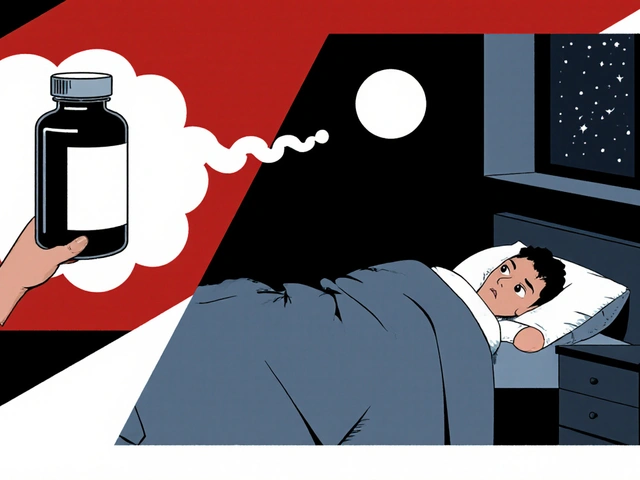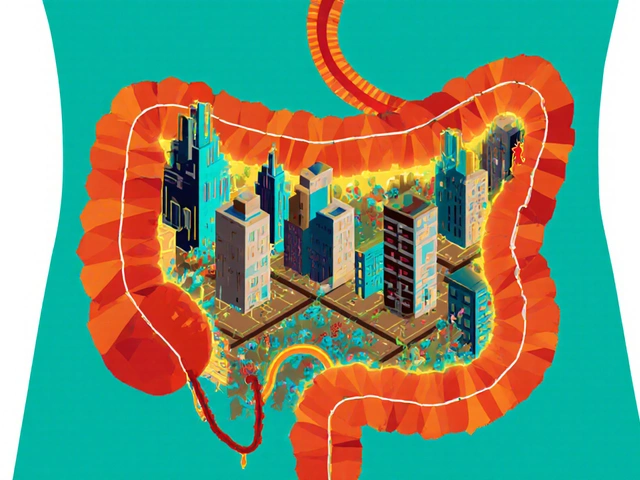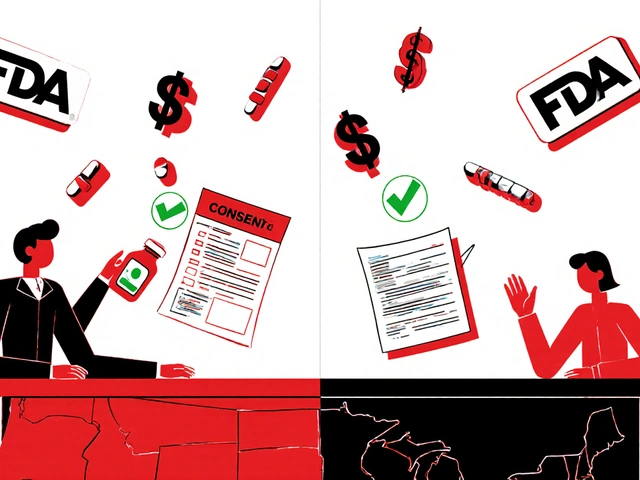Hair loss can be pretty overwhelming to deal with, and if you're looking for alternatives to Propecia in 2025, you're in the right place. Various options today offer different approaches to tackling this issue. Whether you're into natural solutions or are open to the latest medical treatments, there's likely something for you.
Saw Palmetto
A natural supplement that's been making the rounds as a hair loss remedy is Saw Palmetto. It's derived from the fruit of a particular plant and is often marketed as a herbal alternative for both hair loss and prostate health. The idea here is that it blocks 5-alpha-reductase activity, much like finasteride in Propecia.
Pros
- Natural option
- Fewer side effects compared to prescription meds
- Available over-the-counter
- Potential benefits for both hair loss and prostate health
Cons
- Limited clinical evidence supporting its effectiveness
- Quality can vary between brands
- Not regulated by the FDA.
- Introduction
- Saw Palmetto
- Minoxidil
- Dutasteride
- PRP Therapy
- Low-Level Laser Therapy
- Hair Transplant Surgery
- Essential Oils
- Conclusion
Introduction
If you're facing hair loss, you're not alone. In fact, by age 50, up to 85% of men experience significantly thinning hair. It's not just a male issue either—female pattern baldness is a huge concern for women across the globe. Many turns to treatments like Propecia, a popular choice, but it's not the end-all-be-all solution. In 2025, there are countless other Propecia alternatives worth considering.
Now, while Propecia is known for effectively reducing hair loss by blocking DHT production, it comes with potential side effects, like decreased libido and other health concerns. This is why exploring alternative hair loss solutions might be a good call for those seeking different options.
What's great now is that treatments range widely from natural remedies, with fewer side effects, to medical solutions backed by research. The world of hair treatment is always evolving, and it’s offering us more choices than ever before. By digging into what’s available, you’re taking an informed step towards achieving your preferred results.
Whichever option you choose, remember that understanding their pros and cons will help you pick what best suits your needs. Whether it's maintaining your current hair or regrowing what's lost, the key lies in finding that perfect match.
Saw Palmetto
Did you know that Saw Palmetto is often seen as a go-to natural solution for those dealing with hair loss? This remedy comes from the fruit of the saw palmetto plant, which people have been using for ages to tackle various health issues, including prostate problems. So, how does this plant stack up as a hair loss remedy in 2025?
The magic of Saw Palmetto lies in its ability to block 5-alpha-reductase, an enzyme responsible for converting testosterone into dihydrotestosterone (DHT). High levels of DHT are notorious for contributing to hair loss, especially in those with male pattern baldness.
Some Things to Consider
- There's less clinical backing for Saw Palmetto than for prescription drugs like Propecia. If you thrive on evidence, this might be a point to ponder.
- Because it's a natural supplement, Saw Palmetto is available over-the-counter. But that also means the quality can be all over the place since it's not tightly regulated by the FDA.
- If you're all about keeping it natural, Saw Palmetto might win points for being a plant-based option with fewer recorded side effects.
For many folks, the potential to address not just hair loss but also prostate health issues makes Saw Palmetto an intriguing choice. However, it's wise to keep your expectations in check and maybe chat with a healthcare professional before diving in.
| Aspect | Details |
|---|---|
| Origin | Fruit of the saw palmetto plant |
| Main Benefit | Blocks DHT production similar to treatments like Propecia |
| Regulation | Not FDA-regulated, quality varies |
This little plant has made a big impact for those looking to explore natural alternatives to typical pharmaceutical options. If you're curious, it might be worth giving it a try!
Minoxidil
When it comes to tackling hair loss solutions, Minoxidil is a name you might have heard. This topical treatment has been around for a while, making a reputable mark in the hair regrowth world. It's sold under various brand names like Rogaine, and you can find both liquid and foam versions.
The way Minoxidil works is by stimulating hair follicles. You apply it directly to your scalp, and it seems to get those tired follicles to wake up and work again. It's particularly effective for people dealing with hereditary hair thinning on the crown of the head.
Pros
- Widely studied with solid backing for effectiveness
- Available over-the-counter
- Can be used by both men and women
- May begin to show results in just a few months
Cons
- Requires ongoing use for sustained results; the gains can reverse if discontinued
- Possible side effects include scalp irritation and unwanted facial hair growth in some cases
- May not be effective for every type of hair loss
| Duration of Use | Percentage with Visible Improvement |
|---|---|
| 3 Months | 30% |
| 6 Months | 50% |
| 12 Months | 60% |
When considering Propecia alternatives, it's key to remember that results vary. Some folks may see thicker coverage, while others might experience moderate changes. Giving it a try usually involves patience as it needs consistent application. Are you ready to be committed to regular use? Then Minoxidil might be the answer to get some of that hair back.
Dutasteride
Let's talk about Dutasteride, a medication that many have looked towards as another option for dealing with hair loss. Initially used for treating benign prostatic hyperplasia (BPH), it has gained attention for its effectiveness in hair growth. While Propecia (finasteride) mainly inhibits one form of the enzyme that converts testosterone to DHT, Dutasteride blocks two.
This broader approach makes it an effective option against androgenetic alopecia, as DHT is known to shrink hair follicles, leading to hair loss. So, by reducing DHT levels even more than Propecia, Dutasteride might offer some individuals better results.
Pros
- Effective in reducing DHT levels significantly
- May be more potent for hair regrowth compared to Propecia
- Once-daily dosing
Cons
- Not FDA approved for hair loss, only for BPH
- Possible side effects include decreased libido, similar to finasteride
- May require a prescription and medical oversight
There's always been a bit of a buzz about how Dutasteride compares to finasteride in terms of efficacy. Some studies have shown that it could be around 1.5 times more effective in controlling hair loss. But remember, it's not officially cleared by the FDA for this use, despite its growing off-label popularity. Make sure to chat with your doctor if you're considering this option for your hair woes.

PRP Therapy
One modern approach to combatting hair loss is PRP Therapy, or Platelet-Rich Plasma Therapy. It's captured a lot of interest in recent years due to its unique method of leveraging your body's natural healing processes. But how does it actually work?
During a PRP treatment, a small amount of your blood is drawn and placed in a machine that separates platelets and plasma. The platelet-rich plasma is then injected into your scalp. The idea here is that these platelets contain growth factors that can stimulate the hair follicles, potentially leading to thicker and healthier hair.
There are reports claiming visible improvements after a few sessions, which admittedly sounds promising.
Pros
- Uses your body's own growth factors, leading to fewer allergic reactions.
- Non-surgical procedure.
- Many have claimed boosted hair thickness and density.
Cons
- It's not guaranteed to work for everyone.
- Can be a bit pricey since it usually requires multiple sessions.
- You might deal with some pain or discomfort during the injections.
Though PRP might seem like a magic bullet, you should set realistic expectations and maybe consult with a professional to see if it fits your needs. As with any medical treatment, it's always best to weigh the pros and cons thoroughly—and definitely factor in your budget.
Low-Level Laser Therapy
Ever heard of using lasers to help with hair loss? Sounds straight out of sci-fi, right? But it's real, and it's known as Low-Level Laser Therapy (LLLT). This tech has been gathering attention as a non-invasive way to encourage hair growth. Best part? No needles, no surgery.
So how does it work? LLLT involves using a device that emits laser light at a low intensity. The light is absorbed by the scalp, where it's believed to stimulate hair follicles and improve circulation. This, in theory, helps hair to grow back healthier and thicker.
Pros
- Non-invasive and painless
- No downtime; you can return to your day immediately after a session
- May improve hair density and overall scalp health
- Convenient home-use devices available
Cons
- Results may vary from person to person
- Requires regular sessions; might be time-consuming
- Professional treatments can be pricey
Propecia customers might want to know that LLLT is often used alongside other treatments rather than as a standalone solution. Some believe it can boost the effectiveness of medications like minoxidil or dutasteride, though you'll definitely want to chat with a healthcare provider before mixing treatments.
Got some numbers for you: In a 2023 study, 85% of participants saw notable hair improvement when using LLLT alongside minoxidil—a combo worth considering.
Hair Transplant Surgery
Hair transplant surgery has come a long way and is now considered a pretty effective way to restore hair, especially for those who haven't had much luck with other treatments. It's a big deal because instead of slowing down hair loss, you're actually adding new hair to those thinning spots.
There are mainly two types of hair transplant methods: Follicular Unit Transplantation (FUT) and Follicular Unit Extraction (FUE). Both of these have their pros and cons, and the choice between them usually depends on your hair type, the severity of hair loss, and personal preference.
Follicular Unit Transplantation (FUT)
FUT, also known as the strip method, involves removing a strip of scalp from the back of the head and then dividing it into tiny grafts to be transplanted to the balding areas. It might leave a narrow scar but results in a larger number of grafts in one session.
Follicular Unit Extraction (FUE)
FUE is a bit more modern and involves taking individual hair follicles from the scalp. It's less invasive and doesn't leave a linear scar, but might require more sessions to achieve the same result as FUT.
The benefits are quite a few. Imagine waking up with a fuller head of hair! That's gotta feel good. Plus, the new hair grows like normal hair does, meaning you can cut and style it however you'd like. On the flip side, it's a surgical procedure, so it can be a bit pricey. Also, there's some downtime involved, and not everyone is thrilled about that.
| Method | Pros | Cons |
|---|---|---|
| FUT | More grafts in one session | Visible scar |
| FUE | No linear scar | Multiple sessions needed |
Deciding to go for a hair transplant is a big step and usually involves consulting with a professional who can guide you on what's best based on your specific condition and expectations.
Essential Oils
If you're thinking about going the natural route for hair care, essential oils might be the way to go. You've probably heard about these aromatic oils being used for relaxation or skin care, but they have a place in hair health too. Some folks swear by them for thickening and revitalizing hair.
One popular choice is rosemary oil, which some studies suggest can improve hair thickness over time. It's thought to work by boosting circulation in the scalp, which might encourage hair growth. Then there's peppermint oil, known for its cooling effect, which also is believed to increase blood flow to the scalp.
How to Use
So, how do you incorporate these into your routine? It's as simple as mixing a few drops with a carrier oil, like coconut or jojoba oil, and massaging it into your scalp. Let it sit for 30 minutes to an hour before washing it out. Many people find this routine not just beneficial for their hair, but also a relaxing little ritual.
Pros
- Naturally sourced
- Aim to improve scalp circulation
- Can be a relaxing and aromatic part of your hair care regimen
Cons
- Results may vary widely
- Some people might be allergic to certain oils
- Requires consistent use for noticeable effects
While there's no miracle cure for hair loss, essential oils offer a gentle and aromatic approach. They should be safe enough to try alongside other treatments, giving you a multi-pronged attack on hair thinning.
Conclusion
So there you have it—options to think about when planning your next move towards tackling hair loss. From the pharmacy to natural remedies, and even to in-office treatments, 2025 brings a wealth of alternatives to Propecia.
Here's a quick snapshot of what we discussed:
| Alternative | Type | Pros | Cons |
|---|---|---|---|
| Saw Palmetto | Natural supplement | OTC, fewer side effects | Limited evidence |
| Minoxidil | Topical solution | Widely available, proven | Daily application needed |
| Dutasteride | Medication | Effective for many | Not for everyone |
| PRP Therapy | In-office procedure | Natural, uses own blood | Costly and multiple sessions |
| Low-Level Laser Therapy | Device-based treatment | Non-invasive | Time-consuming |
| Hair Transplant Surgery | Surgical procedure | Permanent solution | Expensive, requires recovery |
| Essential Oils | Natural oils | Aromatic, soothing | Lack of strong evidence |
No one-size-fits-all here! Think about what aligns with your lifestyle, budget, and levels of comfort. Always check with a healthcare provider or specialist to narrow down your choices and find the treatment that’s right for you. It’s your journey—make a choice that aligns with your needs!






Wow, this article covers quite a range of options! I've always been curious about what alternatives are available beyond Propecia since it doesn't work for everyone or can have those weird side effects.
I'm most interested in the natural supplements side you mentioned. Like, how effective are they really compared to the newer medical treatments? Are there any that stand out as showing promise in clinical trials or just anecdotal benefits?
Also, it’s great that there’s stuff for different lifestyles. I mean, some folks might want a pill, and others might want a topical or even some lifestyle changes. Wondering if anyone here has tried any of these alternatives and how their experience was?
July 18joshua Dangerfield